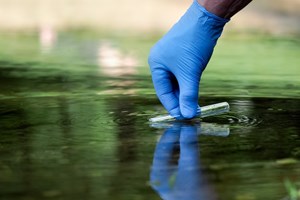Study reveals presence of 'forever chemicals' in New Mexico water sources, prompting EPA action
ALBUQUERQUE, N.M. (AP) — So-called forever chemicals have been found in water sources across New Mexico, according to recent studies by the U.S. Geological Survey and state environment officials.
The federal agency detailed the findings Wednesday, the same day the U.S. Environmental Protection Agency announced its first-ever limits for several common types of PFAS, or perfluoroalkyl and polyfluoroalkyl substances.
Used in everyday products from nonstick pans and firefighting foam to waterproof clothing, PFAS have been linked to cancer and other health problems in humans. They are known as forever chemicals because they don’t degrade in the environment and remain in the bloodstream.
The research in New Mexico detected PFAS in all major rivers in the arid state, with the highest concentrations downstream of urban areas.
USGS researchers looked more closely at water quality in the Rio Grande as it flows through Albuquerque, New Mexico’s largest city, and found PFAS levels downstream that were about 10 times higher than at upstream locations.
Dozens of samples also were taken from groundwater wells and surface water sites as part of an initial statewide survey between August 2020 and October 2021, with officials saying the majority of wells sampled did not turn up PFAS. The work began after contamination was discovered at military installations.
Andy Jochems of the Environment Department’s water protection team said the latest findings will be helpful as regulators make decisions about protecting drinking water resources in the future.
Kimberly Beisner, a USGS hydrologist and lead author of the studies, said the work highlights the complex nature of chemicals in urban areas and their effects on river systems. She noted that concentrations near cities are constantly changing due to wastewater discharges and stormwater runoff, for example.
The utility that serves the Albuquerque area has not seen any PFAS concentrations in the drinking water system approaching the EPA limits, so officials said Wednesday they aren’t anticipating that the new regulations will require any action other than continued monitoring and reporting.
As for contaminants from Albuquerque going into the Rio Grande, utility spokesman David Morris said it’s possible that at some point there may need to be enhancements at the city’s sewage treatment plant.
Related News
From Archive

- Glenfarne Alaska LNG targets late-2026 construction start for 807-mile pipeline project
- U.S. water reuse boom to fuel $47 billion in infrastructure spending through 2035
- $2.3 billion approved to construct 236-mile Texas-to-Gulf gas pipeline
- Major water pipe break in Puerto Rico hits over 165,000 customers
- Potomac River Tunnel project enters construction phase beneath Washington, D.C.
- Pennsylvania American Water launches interactive map to identify, replace lead water service lines
- Trump's tariffs drive $33 million cost increase for Cincinnati sewer project
- Utah city launches historic $70 million tunnel project using box jacking under active rail line
- Tulsa residents warned after sewer lines damaged by boring work
- Fatal trench collapse halts sewer construction in Massachusetts; two workers hospitalized




Comments